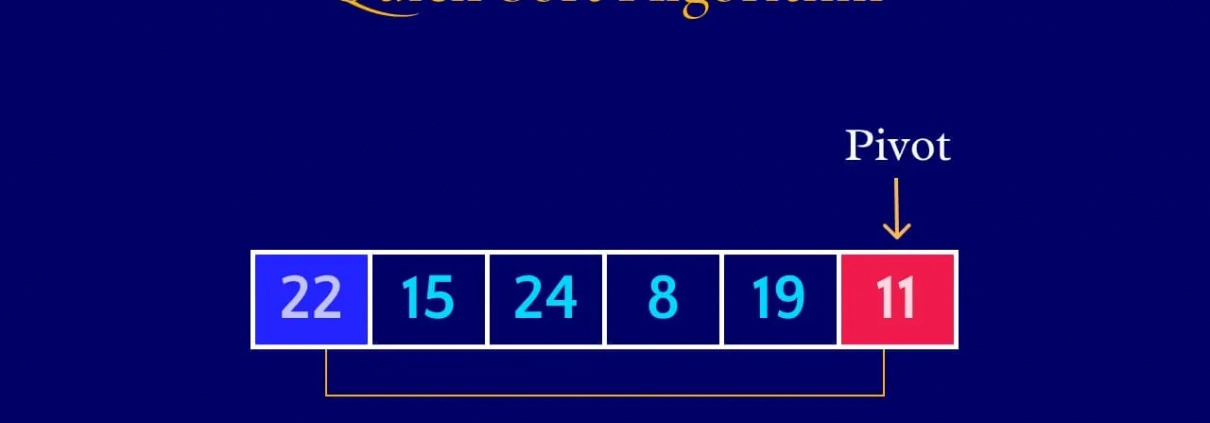Understanding Quick Sort: A Divide and Conquer Sorting Algorithm
Sorting is a fundamental operation in computer science, used in various applications, from databases to search algorithms. There are numerous sorting algorithms, each with its own advantages and disadvantages. One of the most efficient and widely used sorting algorithms is Quick Sort.
Quick Sort is a comparison-based sorting algorithm that follows the “divide and conquer” paradigm. It was developed by Tony Hoare in 1960 and has since become a standard sorting algorithm due to its speed and efficiency. In this article, you’ll explore the inner workings of Quick Sort, understand its time complexity, and provide code examples in different programming languages.
How Quick Sort Works
Quick Sort’s efficiency stems from its elegant and efficient divide-and-conquer strategy. The basic idea behind Quick Sort is to select a “pivot” element from the array and partition the other elements into two sub-arrays, according to whether they are less than or greater than the pivot. The sub-arrays are then recursively sorted.
Here’s a step-by-step breakdown of how Quick Sort works:
- Choose a Pivot Element: Select a pivot element from the array. The choice of the pivot can significantly affect the algorithm’s performance, but we’ll explore different pivot selection strategies later in this article.
- Partition the Array: Reorder the array elements so that elements less than the pivot come before elements greater than the pivot. The pivot itself is in its final sorted position. This process is known as partitioning.
- Recursively Sort Sub-arrays: Recursively apply Quick Sort to the sub-arrays on the left and right of the pivot until the entire array is sorted.
- Combine Sub-arrays: Since each sub-array is sorted, combining them in the correct order results in a fully sorted array.
Let’s dive into a code example to illustrate Quick Sort in action, using Python:
def quick_sort(arr):
if len(arr) <= 1:
return arr # Base case: an array with 0 or 1 elements is already sorted
pivot = arr[len(arr) // 2] # Choose the middle element as the pivot
left = [x for x in arr if x < pivot]
middle = [x for x in arr if x == pivot]
right = [x for x in arr if x > pivot]
return quick_sort(left) + middle + quick_sort(right) # Recursively sort left and right sub-arrays
Now that we’ve seen how Quick Sort works conceptually and has a Python implementation, let’s delve into its time complexity and pivot selection strategies.
Time Complexity of Quick Sort
Quick Sort is known for its impressive average-case time complexity, making it one of the fastest sorting algorithms in practice. The average and best-case time complexity is O(n log n), where “n” is the number of elements in the array.
However, it’s crucial to note that Quick Sort’s worst-case time complexity can be O(n^2) if poorly chosen pivots consistently divide the array into unbalanced sub-arrays. To mitigate this issue, various pivot selection strategies and optimizations have been proposed.
Pivot Selection Strategies
- Random Pivot: Choosing a random element as the pivot can help avoid worst-case scenarios. By introducing randomness, Quick Sort’s performance becomes less predictable.
- Median-of-Three Pivot: Selecting the pivot as the median of the first, middle, and last elements of the array helps balance the sub-arrays and improves performance.
- Optimized Pivot Selection: More advanced pivot selection methods, like the “Introselect” algorithm, aim to choose the pivot intelligently based on the input data.
Implementing Quick Sort in Different Programming Languages
Quick Sort is a versatile sorting algorithm that can be implemented in various programming languages. Below, we provide code examples in JavaScript and C++ to demonstrate its cross-language applicability.
JavaScript:
function quickSort(arr) {
if (arr.length <= 1) {
return arr;
}
const pivot = arr[Math.floor(arr.length / 2)];
const left = arr.filter(element => element < pivot);
const middle = arr.filter(element => element === pivot);
const right = arr.filter(element => element > pivot);
return [...quickSort(left), ...middle, ...quickSort(right)];
}
C++:
#include <iostream>
#include <vector>
std::vector<int> quickSort(std::vector<int> arr) {
if (arr.size() <= 1) {
return arr;
}
int pivot = arr[arr.size() / 2];
std::vector<int> left, middle, right;
for (int element : arr) {
if (element < pivot) {
left.push_back(element);
} else if (element == pivot) {
middle.push_back(element);
} else {
right.push_back(element);
}
}
left = quickSort(left);
right = quickSort(right);
left.insert(left.end(), middle.begin(), middle.end());
left.insert(left.end(), right.begin(), right.end());
return left;
}
int main() {
std::vector<int> arr = {3, 6, 8, 10, 1, 2, 1};
std::vector<int> sortedArr = quickSort(arr);
for (int element : sortedArr) {
std::cout << element << " ";
}
return 0;
}
Conclusion
Quick Sort is a highly efficient and widely used sorting algorithm that leverages the divide-and-conquer strategy to achieve impressive average-case time complexity. While its worst-case scenario can be inefficient, smart pivot selection strategies and optimizations help mitigate this issue. Quick Sort’s versatility allows it to be implemented in various programming languages, making it a valuable tool in a programmer’s arsenal for sorting large datasets efficiently. Understanding Quick Sort and its inner workings is essential for anyone dealing with sorting algorithms and performance optimization in computer science.






